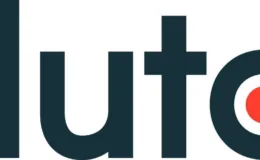
Table of Contents
IT Asset Management (ITAM) is a critical component of any organization’s IT infrastructure. It involves the tracking, management, and optimization of an organization’s hardware and software assets. IT Asset Management services help organizations to reduce costs, improve efficiency, and ensure compliance with regulatory requirements.
However, many organizations struggle with implementing effective IT Asset Management practices due to the complexity of the process. This service can be outsourced to IT Managed Service Provider (MSP). In this article, we will demystify ITAM services and provide an insider’s guide to efficiency.
Implementing ITAM services was like a GPS system for the global manufacturing company’s IT assets, helping them navigate through multiple locations and departments with ease, and ultimately arriving at their destination of optimized usage, cost reduction, and regulatory compliance.
What is IT Asset Management?
IT asset management is the process of managing an organization’s IT assets throughout their lifecycle. IT assets include hardware, software, and other technology-related resources. The goal of ITAM is to optimize the use of IT assets, reduce costs, and ensure regulatory compliance requirements.
The Benefits of IT Asset Management
Effective ITAM practices can provide several benefits to organizations, including:
- Cost savings: ITAM can help organizations to reduce costs by optimizing the use of IT assets and avoiding unnecessary purchases.
- Improved efficiency: ITAM can help organizations to improve efficiency by ensuring that IT assets are available when needed and are functioning properly.
- Compliance: ITAM can help organizations to ensure compliance with regulatory requirements by tracking and managing IT assets.
- Risk management: ITAM can help organizations to manage the risks associated with IT assets, such as security risks and data breaches.
The IT Asset Management Process
The ITAM process involves several steps, including:
1. Inventory Management
The first step in the ITAM process is inventory management. This involves creating an inventory of all IT assets within an organization. The inventory should include information such as the asset type, location, and owner.
2. Asset Tracking
The next step in the ITAM process is asset tracking. This involves tracking the lifecycle of IT assets, from acquisition to disposal. Asset tracking helps organizations to optimize the use of IT assets and avoid unnecessary purchases.
3. Software License Management
Software license management is a critical component of ITAM. It involves tracking software licenses to ensure compliance with regulatory requirements and avoid legal issues.
4. Maintenance and Support
Maintenance and support are essential for ensuring that IT assets are functioning properly. ITAM involves tracking maintenance and support activities to ensure that IT assets are maintained and supported as needed.
5. IT Asset Disposal and Decommissioning
The final step in the ITAM process is disposal and decommissioning. This involves disposing of IT assets that are no longer needed and decommissioning IT assets that have reached the end of their lifecycle.
Challenges of IT Asset Management
Implementing effective ITAM practices can be challenging for organizations. Some of the common challenges include:
1. Lack of Visibility
Many organizations struggle with lack of visibility into their IT assets. This can make it difficult to track and manage IT assets effectively.
2. Complexity
ITAM can be a complex process, especially for organizations with large IT infrastructures. Managing IT assets across multiple locations and departments can be challenging.
3. Cost
Implementing effective ITAM practices can be costly, especially for organizations with limited budgets. However, the cost of not implementing ITAM practices can be even higher in terms of lost productivity, compliance issues, and security risks.
IT Asset Management Services
ITAM services can help organizations to overcome the challenges of implementing effective ITAM practices. ITAM services provide organizations with the expertise and resources needed to manage IT assets effectively.
1. Inventory Management Services
Inventory management services are an essential component of effective IT asset management that can help organizations to manage and optimize their IT infrastructure. These services provide a comprehensive solution for organizations to create, manage, and maintain an inventory of their IT assets, including hardware, software, and other technology-related equipment.
The benefits of inventory management services are numerous. They enable organizations to accurately track and monitor their IT assets, ensuring that they are utilized effectively and efficiently. This, in turn, helps organizations to identify underutilized assets and reduce unnecessary spending on new equipment.
Inventory management services also provide organizations with the tools and expertise needed to manage their IT assets across multiple locations and departments. This is especially important for organizations with large and complex IT infrastructures, where it can be challenging to keep track of assets across multiple sites and departments.
By using inventory management services, organizations can gain real-time visibility into their IT assets, enabling them to make informed decisions about asset allocation, maintenance, and replacement. This can help organizations to reduce downtime, improve productivity, and enhance the overall performance of their IT infrastructure.
2. Asset Tracking Services
Asset tracking services are essential for organizations to keep track of their IT assets throughout their lifecycle. These services enable companies to monitor their assets’ movement, condition, and usage, providing real-time visibility into their status. With asset tracking services, organizations can streamline their inventory management processes, reduce costs, and enhance their asset utilization.
Asset tracking services use various technologies, including barcodes, RFID tags, and GPS, to monitor and track assets. These technologies provide accurate and timely information on the location and condition of assets, allowing companies to identify potential issues before they escalate. For example, if an asset is showing signs of wear and tear, the system can alert the organization to schedule maintenance or repairs.
Asset tracking services can also help organizations to optimize their asset utilization. By monitoring usage, companies can identify underutilized assets and allocate them to areas where they are needed the most. This can help reduce unnecessary purchases, leading to cost savings for the organization.
Moreover, asset tracking services can help organizations to comply with regulatory requirements. Many industries have strict regulations governing the use and disposal of IT assets. Asset tracking services can help organizations keep track of their assets’ compliance with these regulations, ensuring that they meet the necessary standards.
3. Software License Management Services
In today’s digital age, software is an integral part of almost every business operation. Organizations invest heavily in software to enhance their operations and productivity. However, managing software licenses can be a daunting task, especially for large organizations with numerous software applications. This is where software license management services come in to play.
Software license management services help organizations manage their software licenses effectively. They provide a centralized platform that enables organizations to track their software licenses and ensure compliance with regulatory requirements. These services offer various tools and expertise to help organizations manage their software licenses, including license tracking, monitoring, and reporting.
One of the key benefits of software license management services is that they help organizations avoid legal issues. Failure to comply with software license agreements can result in legal action, which can be costly and damaging to an organization’s reputation. With software license management services, organizations can ensure that they are using software licenses correctly and in compliance with regulatory requirements.
Furthermore, software license management services can help organizations save money by optimizing their software usage. They can identify unused or underutilized licenses and help organizations reclaim them. This can significantly reduce software costs and ensure that organizations are only paying for the software they need.
4. Maintenance and Support Services
Maintenance and support services are essential for organizations that rely on IT assets to run their operations. These services can help organizations to keep their IT assets in good working condition, which in turn can help them to avoid downtime, reduce the risk of security breaches, and ensure that they are getting the most out of their technology investments.
One of the key benefits of maintenance and support services is that they can provide organizations with access to expert knowledge and skills. IT professionals who specialize in maintenance and support services have the training and experience necessary to diagnose and fix a wide range of issues that can affect IT assets. They can also provide guidance and advice on best practices for maintaining and supporting IT assets, which can help organizations to optimize their technology use and minimize the risk of future problems.
Another benefit of maintenance and support services is that they can provide organizations with the resources they need to keep their IT assets up-to-date and secure. IT assets require regular updates and patches to address vulnerabilities and ensure that they are functioning properly. Maintenance and support services can help organizations to stay on top of these updates and ensure that their IT assets are protected against the latest threats.
5. Disposal and Decommissioning Services
Disposal and decommissioning services are essential for any organization that wants to keep their IT assets secure and in good condition. These services are designed to help organizations dispose of their IT assets in a safe and environmentally friendly manner, while also ensuring that they are not being used for malicious purposes.
Disposal services help organizations get rid of their IT assets that are no longer needed. This can include anything from old computers and printers to servers and storage devices. These services can help organizations to free up space in their offices and reduce the risk of data breaches and cyberattacks.
Decommissioning services, on the other hand, help organizations to retire their IT assets that have reached the end of their lifecycle. This can include anything from servers and storage devices to networking equipment and software. These services help organizations to ensure that their IT assets are properly disposed of and that all data is securely erased.
One of the biggest benefits of using disposal and decommissioning services is that they can help organizations to reduce their environmental impact. Many IT assets contain hazardous materials and chemicals that can be harmful to the environment if they are not disposed of properly. By using these services, organizations can ensure that their IT assets are recycled or disposed of in a way that is safe for the environment.
In addition to environmental benefits, using disposal and decommissioning services can also help organizations save money. By getting rid of old and outdated IT assets, organizations can reduce their maintenance and support costs. They can also free up space in their offices, which can be used for other purposes.
Case Studies
The following case studies illustrate the benefits of ITAM services for organizations:
Case Study 1: Global Manufacturing Company
A global manufacturing company was struggling with managing its IT assets across multiple locations and departments. The company implemented ITAM services, including inventory management and asset tracking. As a result, the company was able to optimize the use of its IT assets, reduce costs, and ensure compliance with regulatory requirements.
Case Study 2: Healthcare Provider
A healthcare provider was facing compliance issues related to software licenses. The provider implemented software license management services, which helped to ensure compliance and avoid legal issues. The provider was also able to reduce costs by optimizing the use of its software licenses.
Conclusion
IT asset management is a critical component of any organization’s IT infrastructure. Effective ITAM practices can provide several benefits, including cost savings, improved efficiency, compliance, and risk management. However, implementing effective ITAM practices can be challenging for organizations. ITAM services can help organizations to overcome these challenges and manage their IT assets effectively. By implementing ITAM services, organizations can optimize the use of their IT assets, reduce costs, and ensure compliance with regulatory requirements.
If you liked this article, then subscribe to our YouTube Channel or connect us on Facebook, LinkedIn, Twitter and Instagram.
Latest Posts
- Enhancing Creativity With Microsoft 365
- Unleash the Power of Generative AI for Your Business
- TP-Link Wifi Networking Solutions for Home & Business
- Top Backup Solutions for Microsoft 365 Cloud
- How Can Copilot for Microsoft 365 Help Business Owners?
- Compare Microsoft 365 Google Workspace Zoho Workplace
Cloud Tags
advanced threat protection AI IT Support automated processes automation Back-end Development business consulting cost savings CSS Cybersecurity Dell PE Dell PowerEdge Dell Server Digital Marketing fortinet FortiGate 400F Fortinet Security Fabric Fortinet Threat Intelligence Service help desk Home networking HPE PL HPE Proliant HPE Server HTML increased efficiency Intrusion Detection System intrusion prevention system it IT Operations it services it support IT Support Automation IT Support Community IT Support Company IT Support Skills it support thru automation JavaScript network security Next Generation Firewall NFW outsourcing Palo Alto Firewall paynow pay now ransomware Reliable wifi Responsive Design routine IT tasks scam security seo seo marketing singapore software technology tech support TP-Link networking solutions TV mounting solutions ubiquiti wireless wireless technology wordpress hosting zero-day vulnerabilities






